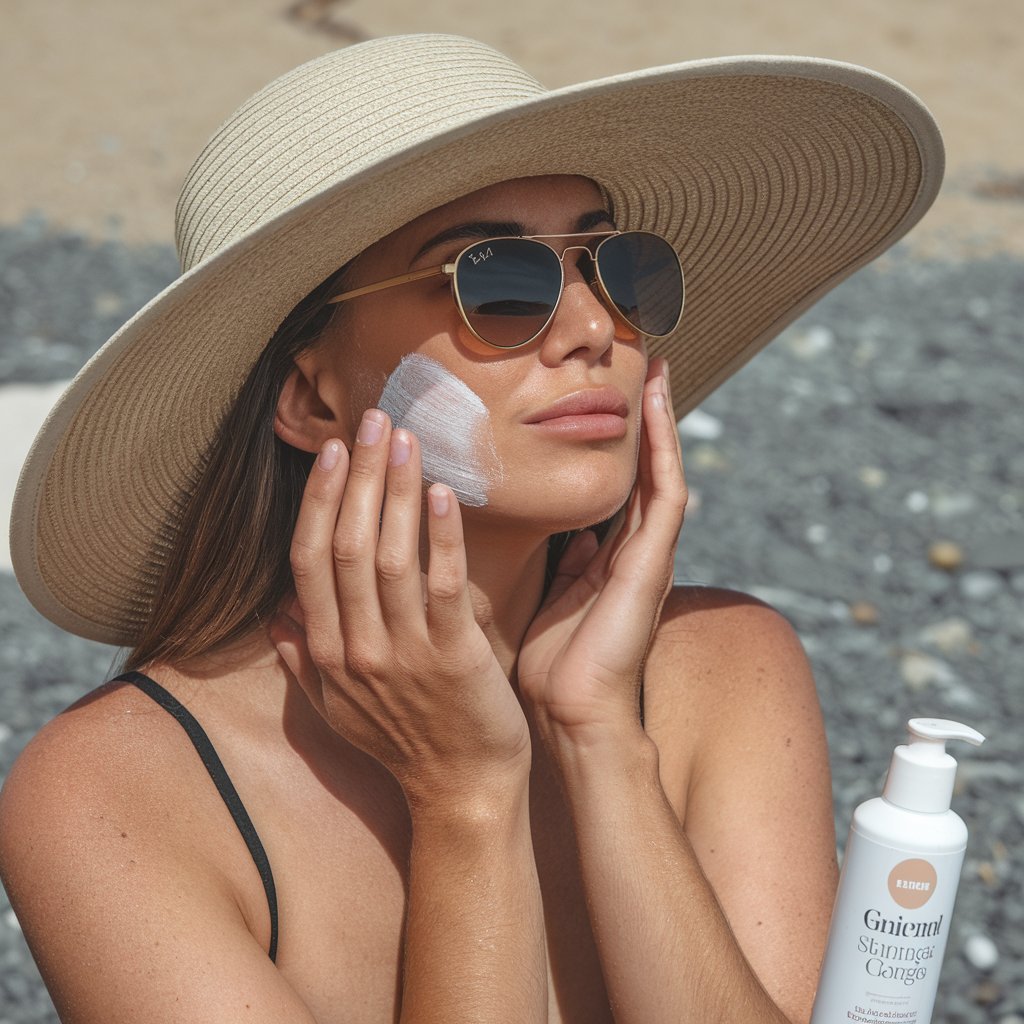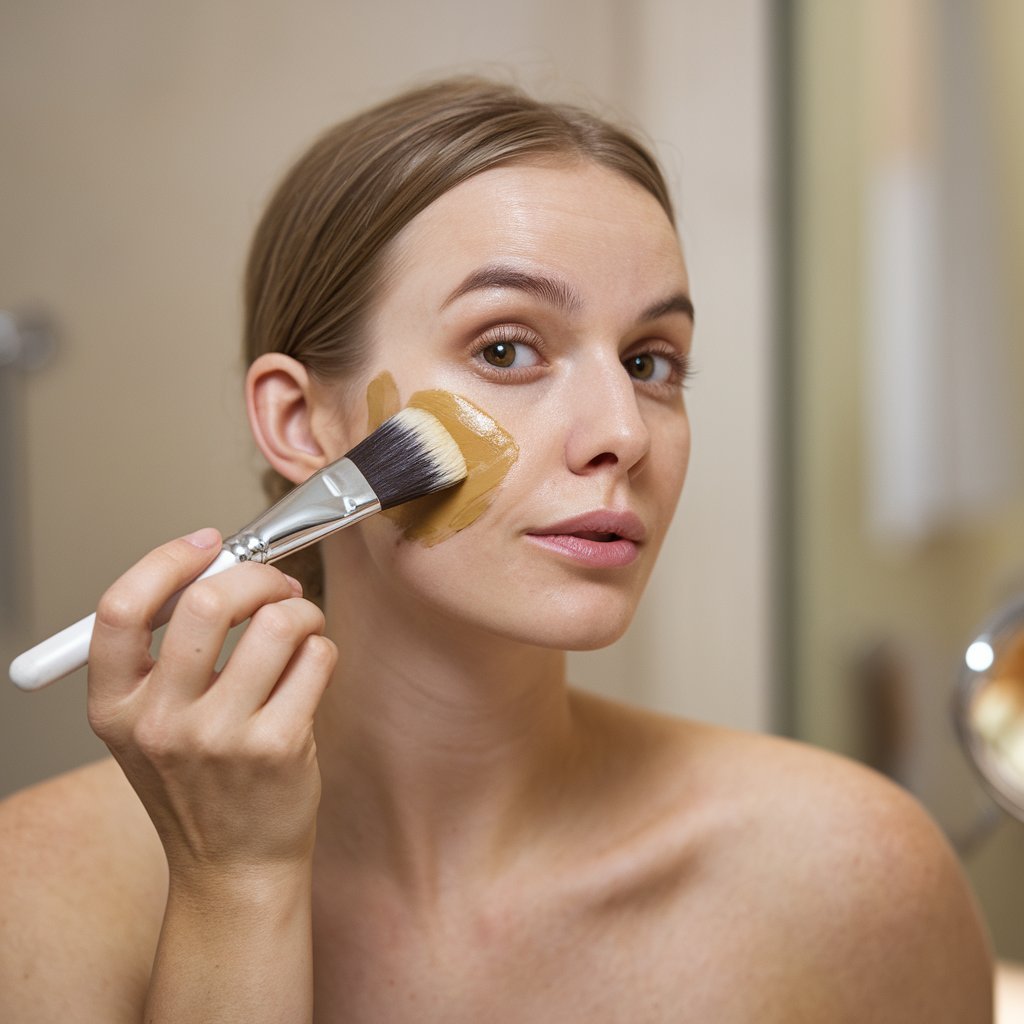Face Tan for Sensitive Skin: Effective Removal Tips for Every Skin Type

People with sensitive skin often struggle with facial tanning. Harsh sunlight can increase dryness, redness, or itching for this delicate skin type. Understanding how to handle sun tan gently is crucial. This introduction explores the need for safe solutions that protect sensitive skin while minimizing unwanted tanning and overall discomfort.
Identifying Your Skin Type and Skin Concerns for Gentle Tan Care
Each face is unique, so it is important to recognize your skin type before choosing a tan removal method. Dry skin might flake or crack under harsh techniques, while acne-prone skin can break out. By learning what makes your face sensitive, you can pick safer, gentler methods for sun care.
Managing Skin Concerns for Acne-Prone Skin
Acne-prone skin needs extra caution when addressing face tan for oily skin. Strong exfoliators can inflame blemishes and worsen redness. Avoid harsh scrubs that tear at sensitive spots. A gentle chemical exfoliant used once or twice per week can help remove dead cells and lessen extra oil, leading to a more balanced surface. Keep track of reactions after every new product. If inflammation appears, scale back usage. For sun protection, use non-comedogenic lotions with an SPF of 30 or higher. Combined with consistent care, this balanced routine can limit flare-ups and reduce tan buildup. Patience and gradual improvements often bring better results for acne-prone skin. Regular hydration with a light moisturizer prevents dryness without clogging pores or irritation.
Protecting Dry Skin While Addressing Tan
Dry skin can lose moisture more quickly when exposed to sun tan, causing tightness and rough patches. A balanced approach starts with gentle cleansers that do not strip natural oils. Cream-based face washes with ceramides and hyaluronic acid support hydration while gradually removing any stubborn tan buildup. Look for soothing components like oatmeal or aloe vera in masks to lock in much-needed moisture. Avoid over-exfoliating, since dry or sensitive areas can flake and crack more easily. Instead, use mild alpha hydroxy acids at lower percentages to soften dead cells without irritation. Shield your skin with sun protection for dark skin, using formulas with physical filters like zinc oxide, which reflect harmful rays. Keep a nourishing moisturizer on hand for daytime and nighttime. This extra barrier wards off itchiness and helps maintain a supple texture. By protecting your dry skin each day, you can keep tan issues in check while preserving comfort and improved overall elasticity.
How to Remove Tan from Sensitive Skin Without Harsh Methods
Finding gentle ways to remove a tan is essential for fragile complexions. Traditional scrubs or harsh chemicals often cause redness or itching. Instead, opt for milder products that fade pigment gradually, reducing stress on your skin barrier. Small steps can keep sensitive skin balanced while still effectively softening unwanted tanning.
How to Get Rid of Face Tan on Sensitive Skin
People often ask how to get rid of face tan on sensitive skin without causing discomfort. A mild exfoliation routine can begin with enzyme-based masks that gently dissolve dead cells. These masks often use papaya, pineapple, or pumpkin extracts to brighten skin gradually. Complement this with hydrating lotions or serums containing ingredients, which help reduce redness and patchiness. Spot treatments with licorice extract can ease hyperpigmentation if used sparingly. Always patch test first. Using lukewarm water instead of hot water improves comfort and helps protect the natural barrier. Be patient, since aggressive attempts to scrub away tan can trigger more sensitivity. In many cases, layering products with soothing agents like aloe vera can hasten the brightening effect. With consistent care and a gentle touch, you will see a gradual improvement in your skin tone while preserving its delicate balance. Sunscreen use prevents darkening and maintains results.

Face Serum Benefits for Gentle Tan Removal
A well-formulated face serum can ease the removal of tan from sensitive skin by targeting uneven pigmentation without stripping natural oils. Serums containing vitamin C or alpha arbutin gradually fade sunspots and patches. Mild antioxidants also protect against environmental harm, preserving your barrier. Choose water-based formulas for faster absorption, minimizing any sticky feel. Some serums for moisture retention, essential when dealing with dryness or irritation. Apply serum after cleansing and toning, then seal with a gentle moisturizer. Consistency is key: an even application each morning or night can deliver visible improvements over time. If possible, use products free from artificial scents or strong preservatives to avoid allergic reactions. Look for clinical evidence or dermatologist recommendations that support each serum’s safety for sensitive skin. With careful selection and daily routine, a face serum can become a powerful tool in your gentle tan removal arsenal. This boosts skin health.
DIY Face Pack Ideas: Best Facial Solutions for Sun Tan
Many people want household remedies for mild tan removal. A DIY face pack can help limit chemical exposure for sensitive skin. Simple blends like yogurt and honey soothe dryness while brightening. These gentle steps can reduce sun tan slowly, making them a popular choice for staying fully comfortable and protected.
Tan Removal Pack for Sensitive Skin: Simple Recipes
Creating a tan removal pack for sensitive skin can be both fun and budget friendly. One popular combination uses mashed banana and milk, which gently hydrates while helping fade dark spots. You can also try oatmeal mixed with rose water for a calming scrub that sloughs off dull cells. If you want more brightening, add mashed papaya or a few drops of lemon juice, but be cautious and do a patch test first. Apply these blends to clean the skin and leave them on for about ten minutes. Then wash gently with lukewarm water. Over time, consistent application can lighten tan marks without irritating your delicate barrier. This also helps maintain a healthier glow by nurturing the surface. Remember to store unused pack mixtures in a cool area if you plan to reuse them soon. Fresh is usually best, so make new batches often for optimal results. They keep delicate skin calmer.
Best Facial Tips for a Mild Face Pack
A best facial approach should begin with a soothing face pack that respects sensitive skin. Ingredients like cucumber, aloe vera, or honey can nourish the complexion instead of shocking it. Also, consider skipping rough scrubs that might inflame your cheeks or forehead. To maintain freshness, make smaller face pack batches right before using them. Gently pat the mixture on with clean fingers. Wait ten to fifteen minutes, then rinse with water. If you want added moisture, top it off with a mild moisturizer or facial mist. The goal is to avoid dryness or tightness that can follow intense treatments. Keep track of how your skin reacts each time you experiment with new recipes. Simple adjustments, like adding a few drops of chamomile tea or reducing application time, can scale down sudden irritation. With this mild approach, you will nurture a healthy radiance over time. This builds trust with your skin.
Professional Skincare for the Best Tan Removal and Brighter Skin
Sometimes, deeper methods are necessary to tackle stubborn sun tan on sensitive faces. Professional skincare clinics offer milder chemical peels, low-intensity lasers, and specialized treatments that limit redness. These solutions provide the best tan removal outcomes while supporting brighter skin. Always select a qualified expert who consistently prioritizes gentle approaches.
Advanced Skincare for the Best Tan Removal
Advanced skincare options may include custom-blended peels that gently remove discolored cells and encourage a smoother tone. This process targets the top layers of skin without creating excessive peeling or tightness. Many clinics combine exfoliation with soothing masks containing botanical extracts to calm your face immediately after treatment. This blend of exfoliation and replenishment is key to achieving an even tone on sensitive skin. For people with stronger tan marks, fractional laser sessions at low intensity can break down melanin clusters and lessen their visibility. Each appointment should involve a thorough consultation, ensuring individual skin type and comfort level are considered first. Professional aftercare might involve anti-inflammatory creams or gentle moisturizers to lock in hydration. With a careful plan, advanced skincare yields steady improvements in the best tan removal results overall in a gentle manner.
Achieving Brighter Skin Through Professional Care
Professional care can transform dull, uneven skin into a vibrant appearance. A skilled specialist customizes each service to address your specific needs, whether you’re dealing with dryness, acne-prone skin, or any other concern. They may recommend microdermabrasion at a gentle setting, removing debris while boosting circulation. Chemical peels at lower strengths can fade pigmentation without upsetting your barrier. Certain clinics also use photofacial devices that target melanin and redness, providing brighter skin over multiple sessions. Before booking, verify the professional’s credentials and ask about patch testing. This step is crucial for sensitive skin to confirm that the procedure will not lead to inflammation. Following each appointment, remember to hydrate with a lightweight moisturizer or post-treatment cream that supports recovery. Do not forget broad-spectrum sun protection, helping to maintain the fresh look. Through consistent follow-ups and careful attention, you can gradually reveal a rejuvenated surface that shines with an even, healthy glow and vitality.

Self Tanner Tips: Facial Self-Tanner and Body and Face Formulas
Some people want sun-kissed skin without direct sun. A self tanner can deliver color while sparing sensitive skin from harmful rays. Focus on facial self-tanner products that feature milder ingredients. Body and face formulas often differ slightly, so choose the right type to avoid streaks, dryness, or extra irritation completely.
Facial Self-Tanner vs Self-Tanning Face Serum
Facial self-tanner usually comes in a creamy form that spreads easily and builds color. It is designed to adapt to delicate facial features, but can still cause minor dryness if overused. A self-tanning face serum, on the other hand, tends to be lighter and may include nourishing ingredients like hyaluronic acid. This helps lock in moisture while providing a gradual tan. Deciding between them depends on texture preference and how quickly you want results. Some people find that a serum offers more control, letting them adjust color with each application. Others favor a classic lotion because it feels familiar and straightforward. Whichever option you choose, exfoliate gently beforehand to create an even surface. Then apply with soft, circular motions. Avoid the eye area or broken skin. If possible, do a patch test on a small area near your jawline. This step ensures minimal reactions and a natural-looking glow. Layer gradually.
Body and Face Formulations that Suit Sensitive Skin
Some self tanners are crafted for body and face together, streamlining your routine. However, sensitive skin might handle an all-in-one solution differently, especially around thin areas like the under-eye region or cheekbones. Patch testing is key here. If the formula is thick, dilute it with a fragrance-free moisturizer before applying. For the body, focus on dry zones such as elbows and knees, which can absorb more color. Take extra care after shaving or waxing, since open pores can enhance product absorption and cause uneven outcomes. Always wash hands immediately unless you use gloves or a specialized mitt. This step prevents accidental staining on your palms or cuticles. For a consistent hue, you may need lighter layers on the face than the body. Adjust your technique based on how each region responds. With careful blending and a slow buildup of color, both body and face can maintain a soft, natural glow.
Prevention: Dtan Pack Routines and Face Mist Protection
Stopping tan buildup is simpler than reversing it. A consistent d tan pack routine and regular use of a face mist shield your sensitive complexion. Choose formulas that calm skin, and always apply sunscreen before heading outside. With diligent care, you will reduce future discoloration and keep irritation at bay effectively.
Making the Most of a D tan Pack
A d tan pack aims to dissolve dead skin buildup while brightening targeted areas. Start by washing your face with a mild cleanser to remove dirt. Then, pat dry so the pack can adhere better. Spread a thin layer and let it sit for about ten minutes. Some formulas include natural enzymes that nibble away at discolored patches without aggressive friction. Rinse with cool water to close your pores. Reapply once or twice a week depending on overall sensitivity, and always listen to your skin’s cues. If redness or stinging arises, shorten the time or reduce usage. Adding beneficial items like honey or aloe vera can enhance hydration during the d-tan process. Remember not to rub too firmly when removing any residue. This gentle approach preserves your skin’s protective barrier. Over time, consistent tan pack application can preserve a fresher appearance, making a face tan less of a concern. This raises comfort.
Adding a Face Mist for Daily Defense
A refreshing face mist can deliver instant hydration and shield sensitive skin against dryness. Many are infused with minerals, antioxidants, or mild botanicals to calm redness. Before stepping outside, spritz a thin layer to help preserve your skin barrier. Reapply as needed, particularly if you live in polluted or dry climates. Some face mists also contain SPF, further preventing sun tan. Check labels carefully to ensure the product is free from alcohol or heavy fragrances. You can store a smaller spray bottle in your bag or desk at work. This convenience keeps daily protection within reach. When used in combination with your d tan pack or sunscreen routine, a face mist completes a layered approach to safeguarding your complexion. Each light spray helps ward off harsh environmental effects, like dust or heat. By making it a habit, you reinforce your sensitive skin’s defenses every day. This gentle step boosts resilience.
Conclusion
Sensitive skin deserves consistent, gentle care. Quick fixes can cause issues if overly harsh methods are used. Instead, rely on mild exfoliants, nourishing ingredients, and protective steps like sunscreen. With a balanced plan, you can manage how to remove tan from face immediately for sensitive skin without risking further discomfort.

Dr. Sheena Majella is a certified dermatologist and the leading skin specialist at Tune Aesthetics. With a deep passion for skin health and beauty, she combines medical expertise with advanced aesthetic treatments to help clients look and feel their best.





